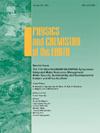了解开普褶皱带半干旱山区集水区的主要水文过程和水流机制
IF 4.1
3区 地球科学
Q2 GEOSCIENCES, MULTIDISCIPLINARY
引用次数: 0
摘要
提高我们对山区溪流特征、蓄水量和主要流道的认识非常重要,因为山区在向低地,尤其是半干旱地区输送水源方面发挥着至关重要的作用。这项研究描述了南非东开普省半干旱山区克罗姆集水区的水源、水流路径和溪流特征。对降水量、浅层和深层地下水位以及溪流数据进行了分析,以确定表明某些过程、反应和水流路径出现和/或占主导地位的模式。研究结果表明了集水区在不同季节和降雨强度下对降雨事件的反应。集水区大部分地区都是陡峭的岩石地区,在高强度暴雨过后,这些地区会出现明显的洪峰。降雨事件后水流的快速和缓慢反应分别表明地表和地下水流路径占主导地位。此外,地表和地下水流对洪泛冲积含水层的补给以及在枯水期维持溪流都有重要作用。年平均径流系数较低(0.09),这意味着从主要流道抽取了大量蒸散(ET)水和/或储存在不活跃的地下水中。克罗姆集水区的洪泛平原面积较大,冲积含水层面积较大,对集水区的蓄水和流出量贡献巨大。总体而言,集水区的溪流由基流维持(50% 的时间)。衰退模式表明,河道的水流来自不同的蓄水层,主要来自冲积含水层和基岩含水层。水流的贡献率各不相同,最长衰退期可达 22 天,表明水流以间流和洪泛区排水为主。在整个监测期间,无论是在低流量还是高流量条件下,河流系统在不同监测点的流量都在增加。河道还通过支流从山体基岩和冲积含水层获得流量。本文提出了一个集水尺度的水流路径和过程概念模型,以加深对半干旱中尺度山区环境中集水尺度水文过程的理解。本文章由计算机程序翻译,如有差异,请以英文原文为准。
Understanding dominant hydrological processes and mechanisms of water flow in a semi-arid mountainous catchment of the Cape Fold Belt
Improving our understanding of streamflow characteristics, water storage, and dominant flowpaths in mountainous regions is important as mountains play a vital role in delivering water to lowlands, particularly in semi-arid areas. This work characterized water sources, flowpaths, and streamflow characteristics in the semi-arid, mountainous Kromme catchment in Eastern Cape Province of South Africa. Precipitation, shallow and deep groundwater levels, and streamflow data were analysed to identify patterns that indicate the occurrence and/or dominance of certain processes, responses, and flowpaths. Results of the study demonstrated how the catchment responds to rainfall events across seasons and rainfall intensities. Steep and rocky areas that make up much of the catchment contributed to significant flood peaks after high-intensity storms. Quick and slow responses in flow after rainfall events indicated the dominance of both surface and subsurface flowpaths respectively. Furthermore, surface and subsurface flows were significant in recharging the floodplain alluvial aquifer as well as maintaining streamflow during dry periods. Average annual runoff coefficients were low (0.09), which implied large evapotranspiration (ET) withdrawals from dominant flowpaths and/or storage in inactive groundwater. The Kromme catchment has a sizeable floodplain with large alluvial aquifers, which make significant contributions to catchment storage and outflows. Overall, the catchment streamflow was sustained by baseflow (for ∼50% of the time). Recession patterns suggested that the channel receives flow from different storages with the alluvial and bedrock aquifers as main contributors. Flow contributions had different rates with maximum recession periods up to 22 days, indicative of interflow dominance and floodplain drainage. Throughout the monitoring period, the river system was gaining flow at the different monitored sites during both low and high flow conditions. The channel was also gaining from the mountain bedrock through tributary flows and from the alluvial aquifer. A conceptual model of flowpaths and processes at the catchment scale is presented to improve the understanding of catchment scale hydrological processes in a semi-arid meso-scale mountainous environment.
求助全文
通过发布文献求助,成功后即可免费获取论文全文。
去求助
来源期刊

Physics and Chemistry of the Earth
地学-地球科学综合
CiteScore
5.40
自引率
2.70%
发文量
176
审稿时长
31.6 weeks
期刊介绍:
Physics and Chemistry of the Earth is an international interdisciplinary journal for the rapid publication of collections of refereed communications in separate thematic issues, either stemming from scientific meetings, or, especially compiled for the occasion. There is no restriction on the length of articles published in the journal. Physics and Chemistry of the Earth incorporates the separate Parts A, B and C which existed until the end of 2001.
Please note: the Editors are unable to consider submissions that are not invited or linked to a thematic issue. Please do not submit unsolicited papers.
The journal covers the following subject areas:
-Solid Earth and Geodesy:
(geology, geochemistry, tectonophysics, seismology, volcanology, palaeomagnetism and rock magnetism, electromagnetism and potential fields, marine and environmental geosciences as well as geodesy).
-Hydrology, Oceans and Atmosphere:
(hydrology and water resources research, engineering and management, oceanography and oceanic chemistry, shelf, sea, lake and river sciences, meteorology and atmospheric sciences incl. chemistry as well as climatology and glaciology).
-Solar-Terrestrial and Planetary Science:
(solar, heliospheric and solar-planetary sciences, geology, geophysics and atmospheric sciences of planets, satellites and small bodies as well as cosmochemistry and exobiology).
 求助内容:
求助内容: 应助结果提醒方式:
应助结果提醒方式:


